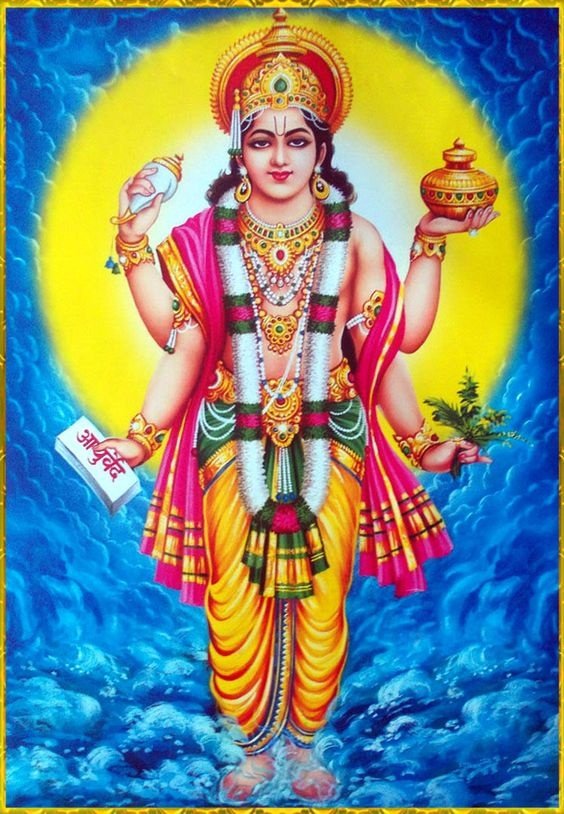हरिः ॐ । Harihi Om.
‘Tattva’, literally meaning “truth” or “reality”, is a level or an element, that constitutes the objects in this material universe, as per the Shaastras. Each Tattva has a presiding devata and the devatas of superior Tattvas are superior to the devatas of the previous Tattvas. They start with the Pancha-bhutas and reach upto Purusha (Brahman). There are a total of 25 Tattvas. These 25 Tattvas are accepted by almost every philosophy, and mainly by Vedaanta.
Hierarchy of the Tattvas
- Prthivi (Earth)
- Aapas (water), Varuna
- Tejas (fire), Agni
- Vaayu (wind), Pravaaha Vaayu
- Aakaasha (space)
- Chakshu (the eye), Surya
- Shrotra (the ear), Soma
- Ghraana (nose), Ashvinau (the two Ashvins)
- Rasa (tongue), Varuna
- Tvak (skin), Kubera
- Vaak (speech), Agni
- Hastau/Paani (the two hands), Indra
- Upastha (genitals), Daksha (Prajaapati)
- Paayu (anus), Yama
- Paada (the feet), Jayanta (the 10th of the 11 Rudras)
- Sparsha (touch) and Shabda (sound), Suparnee
- Rasa (taste) and Rupa (sight), Vaaruni
- Gandha (smell), Paarvati
- Manas (the mind), Rudra (Shiva)
- Ahankaara (ego), Chandra
- Buddhi (Intellect), Sarasvati/Bhaarati
- Chitta (the subconscious mind), Kshetrajna (Paramaatma)
- Mahat (the material energy that is the basis of this universe), Brahmaa/Mukhya Praana
- Avyakta (formless)/Prakrti (the material nature and the basis of the 23 Tattvas), Lakshmi
- Purusha, Vishnu
The first five Tattvas are known as the ‘Pancha-Bhutas’. The next five are known as ‘Karmendriyas’ (senses of action). Tattvas 11–15 are known as the ‘Jnaanendriyas’ (senses of knowledge). Tattvas 16–18 are known as ‘Arthas’ (objects of perception) and the three Devis (Vaaruni, Suparnee and Paarvati) preside over them.
Pramaanas for this Hierarchy
पृथिवी च पृथिवीमात्रा चापश्चापोमात्रा च तेजश्च तेजोमात्रा च वायुश्च वायुमात्रा चाकाशश्चाकाशमात्रा च चक्शुश्च द्रष्टव्यं च श्रोत्रं च श्रोतव्यं च घ्राणं च घ्रातव्यं च रसश्च रसयितव्यं च त्वक्च स्पर्शयितव्यं च वाक्च वक्तव्यं च हस्तौ चादातव्यं चोपस्थश्चानन्दयितव्यं च पायुश्च विसर्जयितव्यं च यादौ च गन्तव्यं च मनश्च मन्तव्यं च बुद्धिश्च बोद्धिव्यं चाहङ्कारश्चाहङ्कर्तव्यं च चित्तं च चेतयितव्यं च तेजश्च विद्योतयितव्यं च प्राणश्च विद्यारयितव्यं च ॥ ८ ॥
Prashna Upanishad, Prashna 4, Mantra 8
“Earth and its subtle form, water and its subtle form, fire and its subtle form, air and its subtle form, akaasha and its subtle form, sight and its objects, taste and its objects, touch and its objects, speech and object, hands and what is to be handled, the organ of generation and what is to be enjoyed, the organ of excretion and what must be excreted, the feet and what is to be trodden on by them, mind and what must be thought, the intellect and what must be determined, egotism and its object, Chitta and its object, light and its object, and Praana and what must be supported by it.”
The 5th Khanda of the Subaala Upanishad, too, mentions a few of the Tattvas and their respective devatas.
The View of Vaishnava Dharma
As per the Vaishnava philosophy (Pancharaatra), there are five additional Tattvas between Prakrti and Purusha. This has been said in the Parama Samhita.
29. The powers characteristic of the Supreme Soul are said to be five. By means of these, it is that the Supreme God remains in the highest Heaven.
30. These five are (1) Parameṣṭi, (2) Pumān, (3) Viśva, (4) Nivṛtti, (5) Saṛva. These are said to be His Five powers. (Śaktis) and are named Pañcopaniṣad (five secrets).
Parama Samhita, Adhyaaya 2, Mantras 29-30
The Rudra who is the devata of Manas-Tattva is Shiva himself, and not one of the Rudras. As per the Vaishnava philosophy, Rudra is the son of Brahmaa and hence, Brahma is superior to him, being the devata of Mahat-Tattva.
Mukhya Praana is the only equal of Brahmaa and so, he shall be taking over the position of Brahmaa, during the next cycle of creation. Bhaarati-Devi, the wife of Mukhya Praana, and Sarasvati Devi, are at an equal position. Both of them are the devatas of Buddhi Tattva. As per the Mundaka Upanishad, Mundaka 3, Khanda 1, Mantras 3–5, Praana (Vaayu and Brahmaa) associates with Buddhi (Bhaarati Devi and Sarasvati Devi). Praana being the devata of Mahat-Tattva is mentioned in the aforementioned reference of the Prashna Upanishad.
Thank you for reading.
Shri Krshnaarpanamastu.
